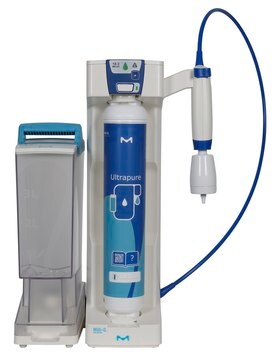11699695001
Roche
ATP Bioluminescence Assay Kit CLS II
sufficient for 800 assays (tubes), kit of 1 (2 components), suitable for detection
Sinonimo/i:
bioluminescence assay
Scegli un formato
CHF 881.00
Scegli un formato
About This Item
CHF 881.00
Prodotti consigliati
Saggio
>98%
Livello qualitativo
impiego
sufficient for 800 assays (tubes)
Confezionamento
kit of 1 (2 components)
Produttore/marchio commerciale
Roche
Parametri
15-25 °C optimum reaction temp.
applicazioni
detection
Condizioni di spedizione
dry ice
Temperatura di conservazione
−20°C
Descrizione generale
Specificità
The sensitivity of the kit is reduced by a factor of 10, compared to the ATP Bioluminescence Assay Kit HS II, which is recommended for determinations that are in the high-sensitivity range. The ATP Bioluminescence Assay Kit HS II also contains an efficient cell lysis reagent, and can be used for the detection of ATP in microorganisms or animal cells.
Applicazioni
For more highly sensitive ATP determinations, use the ATP Bioluminescence Assay Kit HS II.
Confezionamento
Nota sulla preparazione
Working solution: Preparation of working solutions
Luciferase Reagent
Dissolve the whole content of one bottle by carefully adding 10 ml of double-dist. water. Incubate for five minutes at 0 to 4 °C without stirring or shaking. Mix for a homogeneous solution by carefully rotating the bottle. Do not shake. The reagent is stable for one day at 15 to 25 °C or for one week when stored at 0 to 4 °C. However, set up a standard curve each day, because a slightly loss of light activity occurs during this time (approx. 20% after 5 days).
ATP Standard
Each bottle contains approx. 10 mg ATP (> 98% purity; Mr 605.2). The exact amount of ATP is determined individually for each lot as indicated on the label. Dissolve the content of one bottle by addition of the appropriate volume of double-dist. water to get a final concentration of 10 mg/ml or 16.5 mM, respectively (e.g., 960 μl to 9.60 mg ATP).
Ricostituzione
Altre note
Solo come componenti del kit
- Luciferase Reagent, lyophilized (8)
- ATP Standard, lyophilized (for calibration) (4)
Avvertenze
Warning
Indicazioni di pericolo
Consigli di prudenza
Classi di pericolo
STOT RE 2
Codice della classe di stoccaggio
11 - Combustible Solids
Classe di pericolosità dell'acqua (WGK)
WGK 2
Punto d’infiammabilità (°F)
does not flash
Punto d’infiammabilità (°C)
does not flash
Scegli una delle versioni più recenti:
Possiedi già questo prodotto?
I documenti relativi ai prodotti acquistati recentemente sono disponibili nell’Archivio dei documenti.
Il team dei nostri ricercatori vanta grande esperienza in tutte le aree della ricerca quali Life Science, scienza dei materiali, sintesi chimica, cromatografia, discipline analitiche, ecc..
Contatta l'Assistenza Tecnica.








